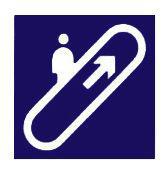SAS Urban Survival Handbook (81 page)
Read SAS Urban Survival Handbook Online
Authors: John Wiseman
Tags: #Health & Fitness, #Reference, #Survival, #Fiction, #Safety, #Self-Help, #Personal & Practical Guides, #General, #Survival Skills
Water transport
You might think twice before stepping onto a riverboat, since the horrific night in August 1989 when 51 people perished in the middle of London’s Thames. Nobody could have predicted the Marchioness disaster—it was a freak accident, which is highly unlikely to be repeated. However, it is as well to be prepared when you’re travelling over water, even in the middle of a city.
Many aspects of water safety are taken out of your hands on a ferry, waterbus or pleasure cruiser. The crew MUST be responsible for passenger welfare—and trained to cope in any emergency. Certain situations, however, may call for an instant reaction.
Man overboard!
Your priority as a passenger is, of course, to alert the crew—IMMEDIATELY. The greater part of the following procedure will be their responsibility:
◑ Start turning the boat to approach him/her from downwind and shout ‘man overboard’ to alert all crew to the situation. Throw life belts (BESIDE the person) and KEEP WATCHING. As you approach, stop the engine before hoisting them in (over the stern, in calm water). If the person appears in difficulty or is losing consciousness, someone (who MUST be wearing a life jacket) must jump in and help them.
YOU overboard!
How you cope depends on whether the water is cold or warm. In either case, your first action is to
SHOUT
and inflate your life jacket, if you have one.
COLD WATER:
If you have a life jacket, curl up in the foetal ‘HELP’ (heat-escape-lessening) position to keep warm. If you have no life jacket, remove heavy footwear, but keep all your clothes on—even when soaked, they help you conserve heat. Try to float on your back, moving as little as possible and breathing slowly.
WARM WATER:
If you have no life jacket, you can make a float from a pair of trousers by knotting each ankle, holding the waistband open behind you and whipping them over your head, trapping air in the legs. Failing life jacket and trousers, adopt the ‘drownproofing’ position—lying relaxed face downwards in the water, with arms forward.
DON’T
try to swim to shore when at sea or in a wide river, nor after the boat—you’ll exhaust yourself quickly swimming in clothes.
FIRE ON BOARD
Fire on board a boat can spread rapidly, especially if the boat is constructed from wood/fibreglass. It is doubly dangerous, because of the proximity of fuel tanks. Again, the crew should deal with any fire, but if you discover it first:
- ■
SHOUT! Turn off the engine. Throw any burning equipment or fittings overboard. Get everyone out if the fire is below deck, close doors and hatches and fight the fire from above, so that you’re able to retreat to safety if necessary. - ■
NEVER throw water on blazing petrol or gas. Use an appropriate extinguisher (see FIRE!).
LIFTS/ESCALATORS
 In many buildings there is little option but to use a lift to reach upper floors. Few people have the stamina to climb regularly to higher than four
In many buildings there is little option but to use a lift to reach upper floors. Few people have the stamina to climb regularly to higher than four
floors let alone the average 14 or 15 in a large block of flats! Many people may not be able to manage that sort of climb if, for instance, they are elderly, carrying heavy loads or have a heart or breathing problem. Lifts have been a part of life for over a hundred years. In principle, most are quite simple, but they can still suffer from frequent operating problems.
Types of lift
There are two main types of lift: hydraulic and traction. Almost all lifts operate electrically and are obviously to be avoided during known periods of power failures.
Hydraulic lifts,
mainly in low-rise buildings, are driven by a pump that raises and lowers a ram (piston) and—with lots of variations—usually conform to one of the following principles. The ram may be situated directly beneath the car, pushing it up and down the shaft on guide rails OR the ram may be situated to one side of the shaft and use steel suspension ropes to pull the car up and down the shaft on the guide rails.
Traction lifts
employ a motor, gearbox and brake to raise and lower the car on guide rails by a system of pulleys, steel suspension ropes and counterweights. High-speed lifts usually do not have a gearbox—they are driven directly by the motor.
REMEMBER
In Britain, at least, it is a safety requirement that the steel suspension ropes in a lift are capable of taking twelve times the load imposed on them – so they are extremely unlikely to break. There is a minimum of two ropes (usually four or five), any ONE of which would support the weight of a full lift car.
Hatches
Lifts used to have hatches in the ceiling, towards the back of the car, for engineers’ access. They were designed for engineers to be able to climb INTO the car—NOT for passengers to climb out. Most are locked outside the car. In Britain, hatches are being phased out. There have been very serious accidents when vandals or show-offs have used these hatches—probably because they saw someone do so in a movie.
Safety devices
The worst thing that could go wrong with a direct hydraulic lift (where the ram is situated directly below the car) is that—for one reason or another—there may be a sudden loss of hydraulic pressure. The car would sink to the bottom of the shaft, but would do so slowly.
If the steel suspension ropes were to break (in some hydraulic and all traction lifts) there is a non-electrical speed monitoring device. This recognizes that the car has begun to descend too rapidly—a ten per cent increase in speed will trigger it—and immediately engages wedges beneath the car to arrest the downward movement.
At the bottom of the lift shaft there are buffers which will absorb the impact of a falling lift car.
Lift doors must be closed before a lift will operate. If it is possible to operate the lift with ANY door open, do NOT use the lift. It must be serviced.
Some lifts (especially modern ones) recognize when the load capacity has been exceeded, and will not operate until someone steps out and lightens the load.
Automatic doors should always reopen if a person or object prevents them from closing. The car should not be able to move if the doors are not fully closed—someone could be caught in the doors. This is obviously a VITAL safety precaution.
Using lifts
When entering or leaving the lift car, check that the lift has stopped exactly level with the floor. This is a surprisingly common problem and causes many accidents, as people trip up or down the uneven levels.
The maximum number of persons the lift can carry will be clearly displayed within the car. Do NOT exceed it—some modern lifts won’t allow you to—although the greatest risk is that the motor will be electrically overloaded and break down. It is also possible that the lift will descend more rapidly than usual and trigger the speed-monitoring device—stopping the car anywhere in the shaft.
Lattice-gate (cage) lifts should ALWAYS incorporate a ‘stop’ button—in case someone or something gets caught in the lattice. Solid-door lifts may also have ‘stop’ buttons.
All lifts MUST have alarm buttons or emergency telephones. Alarm buttons simply sound a bell or buzzer to draw attention to the fact that there is a problem with the lift. If you can’t hear the alarm from the car, it may be sounding in a security office, the caretaker’s room—even in the street. Press the bell even if you cannot hear the alarm—in a power failure, a back-up battery will operate it.
Some emergency telephones are ‘hot lines’ to a rescue service. Some require you to dial an emergency number. If that doesn’t ring or no one answers, dial the fire brigade.

WARNING
Do NOT hold automatic doors open by holding back the doors. Most have an override function – after several attempts to close, the doors will attempt to push any obstruction out of the way so that the car can move. A warning buzzer may sound at the same time. Use the ‘door open’ button instead.
REGULAR MAINTENANCE
Whoever owns the lift is responsible for any damage or injury caused by it. Whoever manages the lift MUST keep a record of reported operating problems and MUST ensure that regular maintenance is carried out. Every day someone must check:
- ■
The alarm button - ■
The telephone - ■
The ‘door open’ button - ■
The ‘stop’ button - ■
The lights - ■
The floor indicators
It is also vital to report the failure of the car to stop exactly level with each set of doors. There should be no step up or down into the car.
TRAPPED IN A LIFT
Stay calm. Keep others calm. Most people have seen ‘disaster’ movies and many will immediately assume that the car will plummet to the bottom of the shaft. Some will be angry as well as anxious, if they have an appointment that they will miss. Take charge. Understanding how lifts work will help you reassure others. Discourage anyone who starts to tell ‘lift disaster’ stories.

EMERGENCY!
LIFTS
1
Press the lowest and highest floor buttons, NOT all the buttons. If the lift car does not start moving again . . .
2
Press the ′door open′ button. You might be at a floor. It′s quite common for the doors to close, but for the car to stay put.
3
Press the alarm button. You may not be able to hear it sounding. Hold your finger on it for as long as you like.
4
There may be a phone. Some contact emergency services directly, whereas others work as ′outside lines′. Call the number indicated on the lift instructions or call the fire brigade. If there is an outside line, don’t let anyone use it for personal calls until rescue has been arranged.
5
If there is no alarm/phone, bang loundly and rhythmically on the doors. Several people should bang in unison using keys, shoes or coins to make as much noise as possible. Pause every few beats to see if you can hear anyone coming to help.
6
If you have made contact with the outside, try to wait as calmly as possible.
 Will the lift plummet down the shaft?
Will the lift plummet down the shaft?